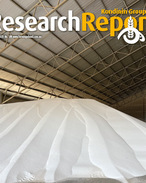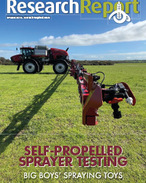This article is 3 years old. Images might not display.
The Department of Primary Industries and Regional Development (DPIRD) said there have been reports of wind erosion from across the agricultural region, particularly from the West Midlands.
DPIRD senior research scientist, Paul Findlater, said paddocks should have at least 50 per cent groundcover, of which about 30 per cent should be anchored, to reduce the risk of soil erosion.
Findlater said stubble management was key to preventing soil particles from becoming airborne.
"With heavy stubbles this year in many areas, due to the large harvest, landholders will be in a good position to maintain groundcover and set up paddocks for the 2022 growing season," he said.
"There are additional benefits from retaining stubble, including improved rainfall infiltration, reduced soil water loss, improved soil organic matter and soil structure, as well as protecting seedlings from sand blasting in the new season."
Findlater advised growers to manage heavy stubbles carefully as they prepared paddocks for their 2022 sowing program to ensure sufficient groundcover was maintained.
"Windrow burning is a practical option to reduce stubble residues and mange weed seeds to provide enough groundcover to prevent soil erosion," he said.
"Some windrow burning tips from the experts are available on the department's website."
DPIRD also has more information on grazing stubbles and dry pastures linked to its Season 2022 webpages, including targets for grazed and un-grazed stubbles.
Findlater said while stubbles were often used as sheep feed, they do not contain as much nutrition as other feed alternatives.
"Sheep only eat about six per cent of stubbles and with more efficient harvesting techniques and weed control, stubble paddocks contain less nutritional value these days," he said.
"We recommend managing grazing to retain at least 600 kilograms per hectare of dry matter on pasture paddocks to prevent soil erosion.
"Feed budgeting will be essential over summer and autumn to help manage pasture cover and livestock health. Adequate ground cover will also enable pastures to jump away at the break of the season and provide a good feed source for livestock."
Other ways to reduce soil erosion include keeping stock off paddocks with low cover by confinement feeding, feedlotting, agisting or selling stock before paddocks and stock lose condition.
DPIRD recommends limiting all vehicle movements in paddocks that are susceptible to wind erosion and protecting small bare areas that could lead to soil blowouts, such as sheep camps, around gateways and laneways, by applying a binding spray, clay, gravel or straw.
More information is available here: https://bit.ly/39ZuKvB























